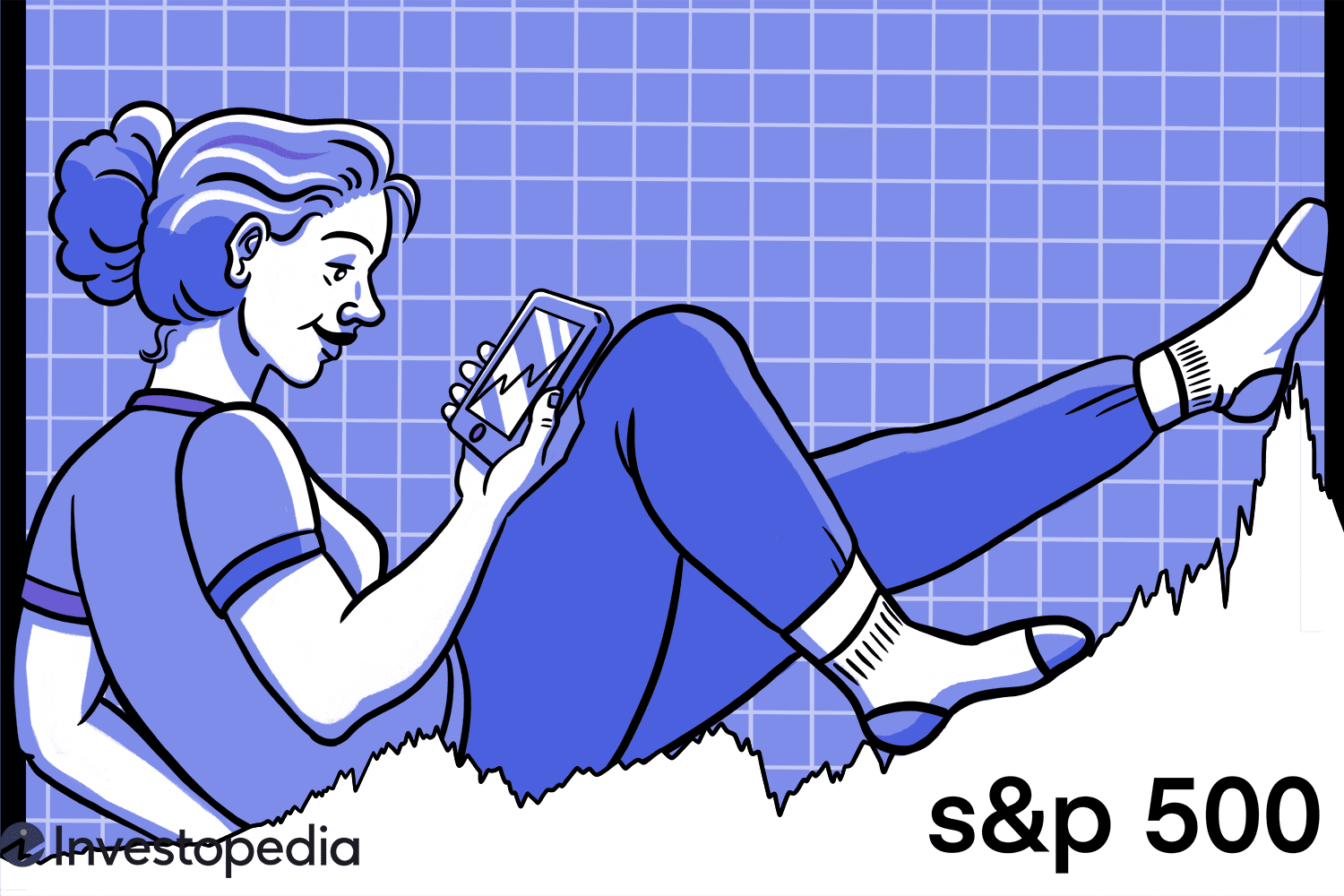 What Is the S&P 500 Index?
What Is the S&P 500 Index?
The Standard & Poor’s 500 Index (S&P 500) is a market-capitalization-weighted index of the 500 leading publicly traded companies in the U.S.While it assumed its present size (and name) in 1957, the S&P actually dates back to the 1920s, becoming a composite index tracking 90 stocks in 1926.The average annualized return since its inception in 1928 through Dec.31, 2022, is 9.81%.The average annualized return since adopting 500 stocks into the index in 1957 through Dec.31, 2022, is 10.13%.
The average annual return (AAR) is the percentage showing the return of a mutual fund in a given period.
In other words, it measures a fund’s long-term performance, so it’s a vital tool for investors considering a mutual fund investment.
Key Takeaways
– The S&P 500 is a market-capitalization-weighted index of the 500 leading publicly traded companies in the U.S.
– The index acts as a benchmark of the performance of the U.S.
stock market overall, dating back to the 1920s.
– The index has returned a historic annualized average return of around 10.13% since its 1957 inception through the end of 2022.
– While that average number may sound attractive, timing is everything: Get in at a high or out at a relative low, and you will not enjoy such returns.
The History of the S&P 500
– During the first decade
after its introductionin 1957, and reflecting the economic expansion in the U.S after World War II, the value of the index rose to slightly over 800.
– From 1969 to 1981, the index gradually declined to fall under 360 as a sign of high inflation.
– During the 2008 financial crisis and the Great Recession, the S&P 500 fell 56.8% from October 2007 to March 2009.
– The S&P bounced back from the crisis and continued its
10-year bull runfrom 2009 to 2019 to climb 330%.
– The COVID-19 pandemic in 2020 and the subsequent recession caused the S&P 500 to plummet over 15%.
– The S&P 500 recovered during the second half of 2020, reaching several all-time highs in 2021, but dropped more than 1,500 points in 2022 before rebounding in October.
S&P 500 Historical Returns
|Year||Annual Returns With Dividends|
|1995||37.20%|
|1996||22.68%|
|1997||33.10%|
|1998||28.34%|
|1999||20.89%|
|2000||-9.03%|
|2001||-11.85%|
|2002||-21.97%|
|2003||28.36%|
|2004||10.74%|
|2005||4.83%|
|2006||15.61%|
|2007||5.48%|
|2008||-36.55|
|2009||25.94%|
|2010||14.82%|
|2011||2.10%|
|2012||15.89%|
|2013||32.15%|
|2014||13.52%|
|2015||1.38%|
|2016||11.77|
|2017||21.61|
|2018||-4.23|
|2019||31.21%|
|2020||18.02%|
|2021||28.47%|
|2022||-18.01%|
How Inflation Affects S&P 500 Returns
Inflation is one of the major problems for an investor hoping to recreate that 10.13% average return regularly.
Adjusted for inflation, the
historical average annual return is only around 6.29%.There is an additional problem posed by the question of whether that inflation-adjusted average is accurate since the adjustment is made using the inflation figures from the Consumer Price Index (CPI), the index that some analysts believe vastly understates the true inflation rate.
How Market Timing Affects S&P 500 Returns
Another major factor in annual returns for an investor in the S&P 500 is when they choose to enter the market.For example, the
SPDR S&P 500 ETF Trust ( SPY), which duplicates the index, performed very well for an investor who bought between 1996 and 2000 but experienced a consistent downward trend from 2000 to 2002.
Investors who buy during market lows and hold their investment or sell at market highs will experience larger returns than those who buy during market highs, particularly if they sell during dips.
Attempting to time the market is not advised, particularly for beginning investors.
Stock purchase timing plays a role in returns, but there are long periods between lows and highs.It is also difficult to know or predict these events.For those who want to avoid the missed opportunity of selling during market lows but don’t want the risk of active trading,
dollar-cost averaging is an option.
503
The number of stocks listed on the S&P 500.The total number tends to vary because there may be several companies with multiple share classes.These include Google, Meta Platforms, and Berkshire Hathaway.
How to Invest In the S&P 500
You can’t invest in the S&P 500 directly because it is a stock market index, not an individual stock or fund you can buy.However, you can purchase the stock of S&P Global (
SPGI), the company that maintains the index.
You can also purchase one of every stock listed on the S&P 500, but you’ll need quite a bit of capital to do so—it might cost around $3,000 to purchase only one of each of the top 10 stocks on the index.
For most people, the simplest and most affordable option for investing in the S&P 500 is to buy shares of an
exchange-traded fund (ETF) or index fund that mirrors it.In these instruments, a company builds a portfolio of stocks that mirror the S&P 500 index, securitizes and fractionalizes those stocks, and offers them as shares of a fund you can buy.These funds are often provided at a much lower cost than if you were to buy one of every stock on the index to get similar performance.
The first step to investing in the index is to open an account with a reputable brokerage firm such as Vanguard, Fidelity, or Charles Schwab.Modern brokers have easy-to-use online platforms, where you can buy and sell most types of investments for minimal or no fees.
Then, look over the brokers’ products and find an ETF or index fund that
mirrors the S&P 500.Some examples are:
– SPDR S&P 500 ETF (
SPY)
– iShares Core S&P 500 ETF (
IVV)
– Vanguard S&P 500 ETF (
VOO)
– Invesco S&P 500 Equal Weight ETF (
RSP)
– Schwab S&P 500 Index Fund (
SWPPX)
– Fidelity 500 Index Fund (
FXAIX)
What Is the Average Rate of Return for the S&P 500 for the Last 20 Years?
Over the past 20 years (2002 to 2022), the average annualized return on the S&P 500 is 8.14%.
What Is the Average Rate of Return for the S&P 500 for the Last 10 Years?
The average rate of return for the S&P 500 since 2012 is 12.74%.
Does the S&P 500 Return Include Dividends?
S&P 500 returns, as calculated, do not include dividends.
However, you can find results by some analysts that include dividends, such as the list put together by Aswath Damodaran, a professor of finance at the NYU Stern School of Business.
The Bottom Line
The S&P 500 is the
standard for measuring overall market returns.There have been many ups and downs in its century of existence, but generally, the index has produced returns over the long run.Since its inception, it has returned 9.81%.
You can invest in the S&P 500 using index funds and exchange-traded funds that mimic the index and not pay as much as you would for each stock.Investing in funds that track the S&P 500 is a long game, not for the faint of heart—many investors have lost everything by panic selling during a dip.If you’re looking for an investment with a long-standing
history of decent long-term returns, S&P 500 funds might be a suitable choice for your portfolio.
editorial policy.
S&P Dow Jones Indices.”
Icons: The S&P 500 and The Dow.”
S&P 500 Data.”
Stock Market Returns Between 1928 and 2022.”
S&P 500 Data.
“
Stock Market Returns Between 1957 and 2022.”
Macrotrends.”
S&P 500 Index – 90 Year Historical Chart.”
Federal Reserve Bank of Atlanta.
“
Stock Prices in the Financial Crisis.”
TradingView.”
A Decade Review of the S&P500 (SPX): Market Milestones.”
TradingView.”
https://www.tradingview.com/symbols/AMEX-SPY/,” Select “All Time.”
S&P Down Jones Indices.”
S&P 500: Data.”
S&P 500 Data.”
Stock Market Returns Between 2002 and 2022.”
S&P 500 Data.”
Stock Market Returns Between 2012 and 2022.”
New York University, Stern School of Business.
“
Historical Returns on Stocks, Bonds and Bills: 1928-2022.”.
